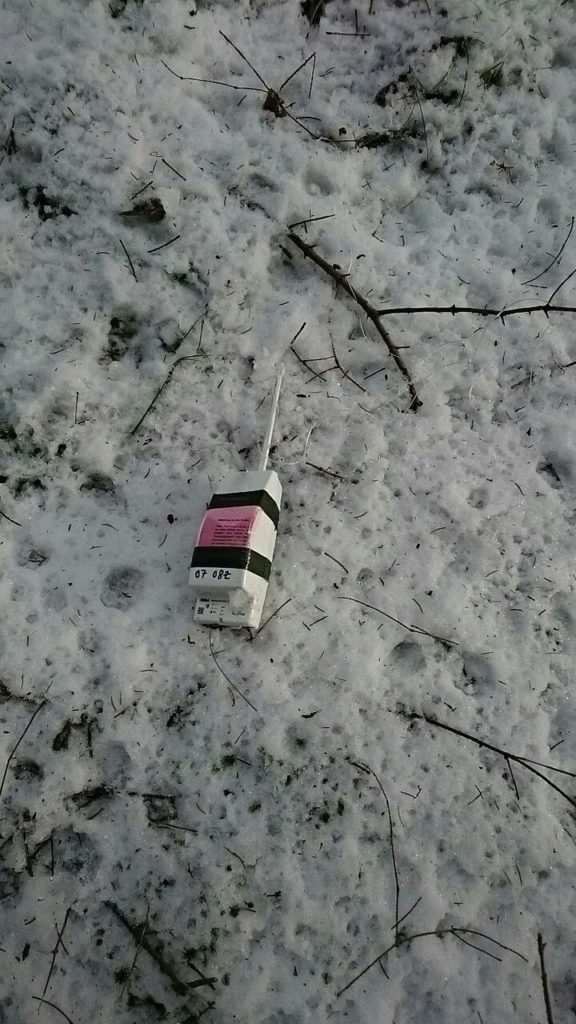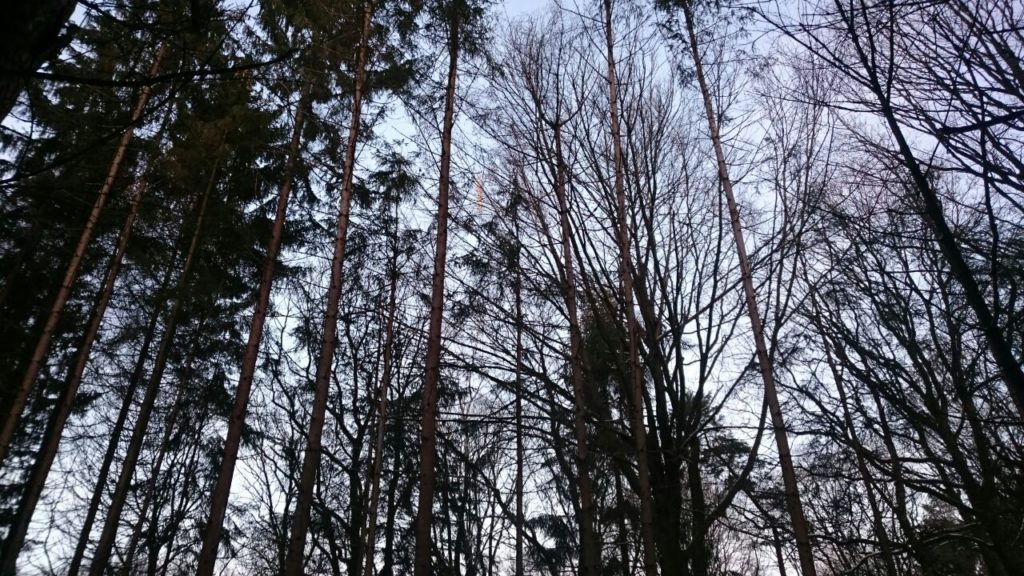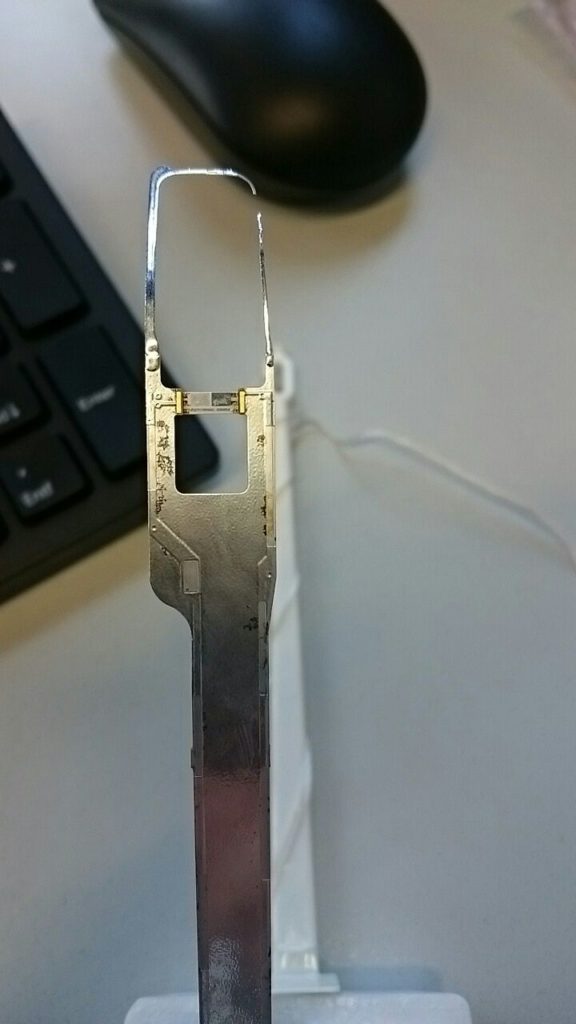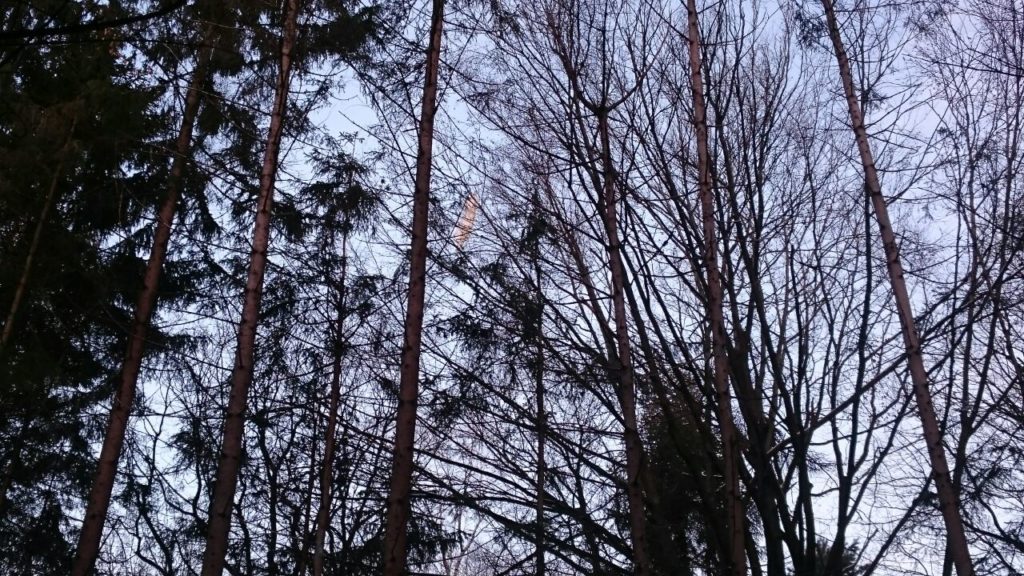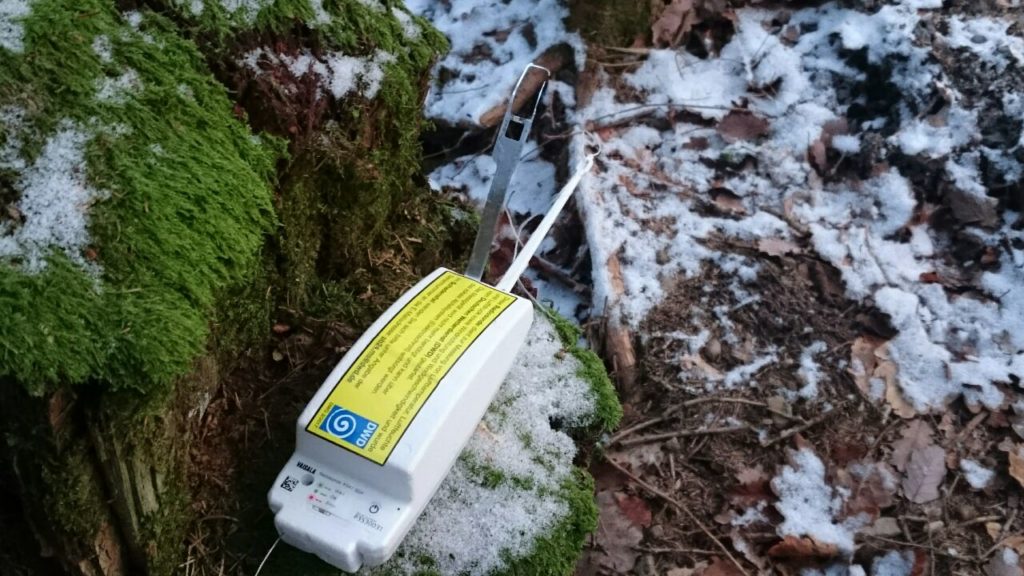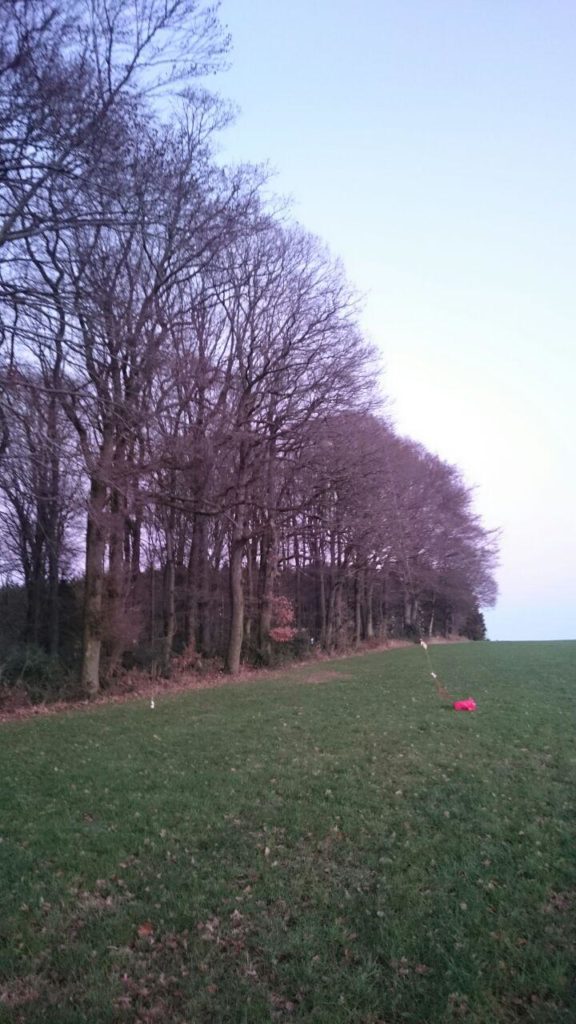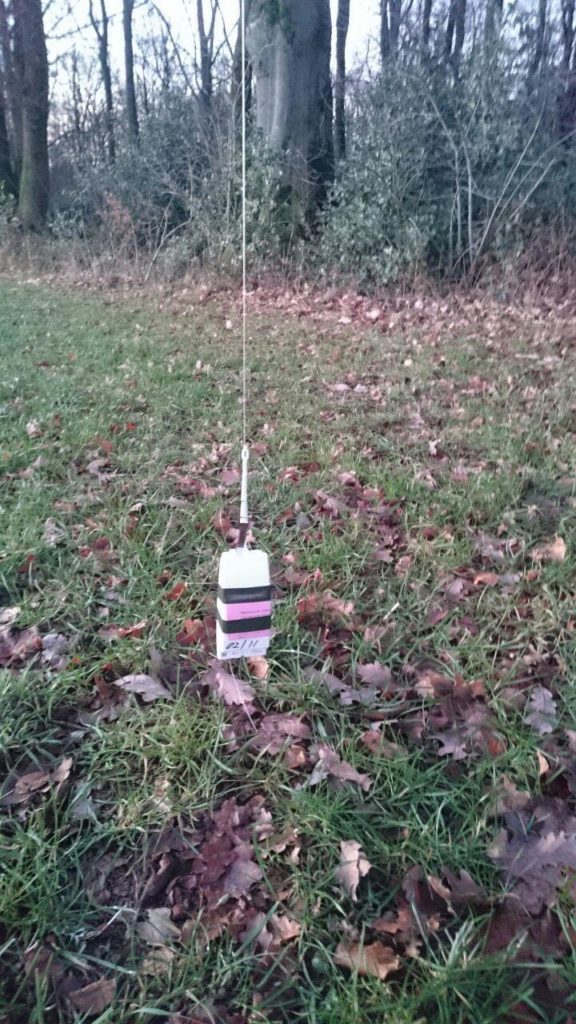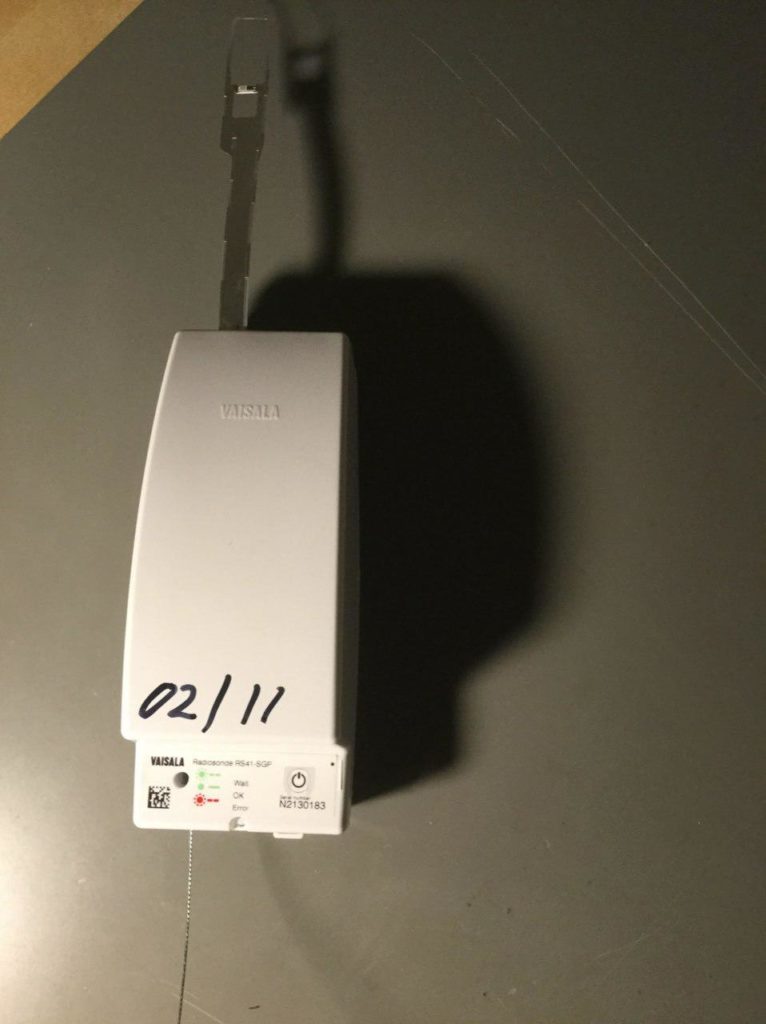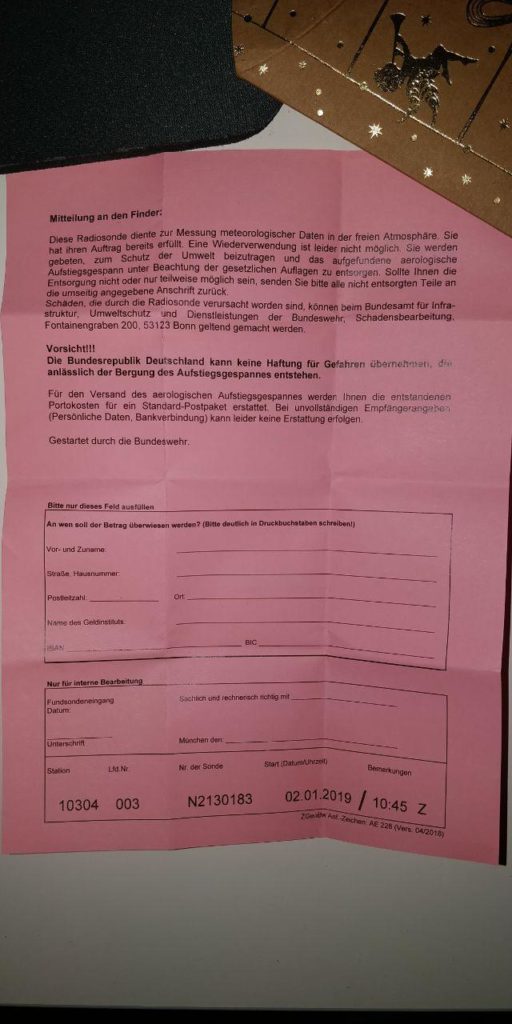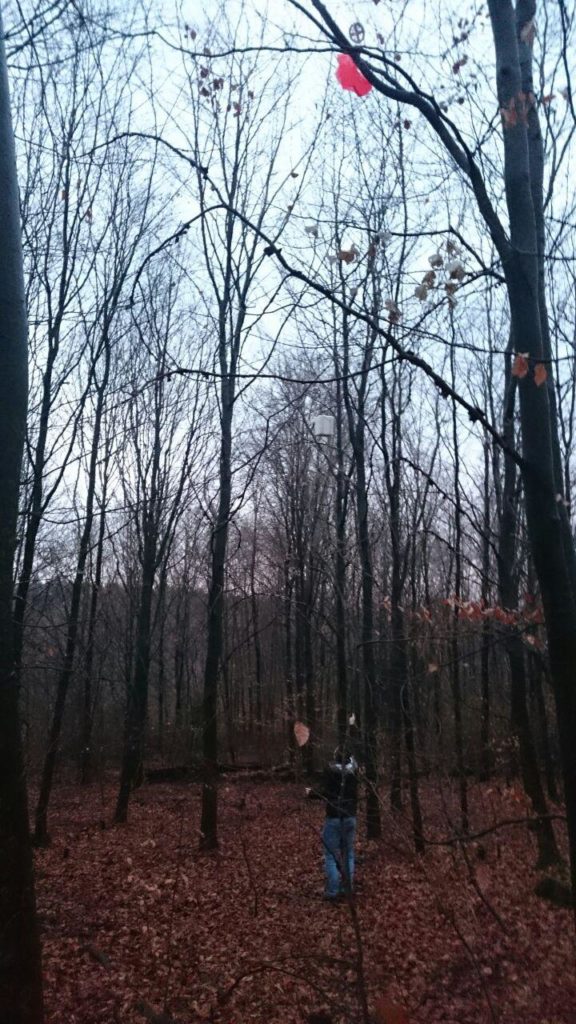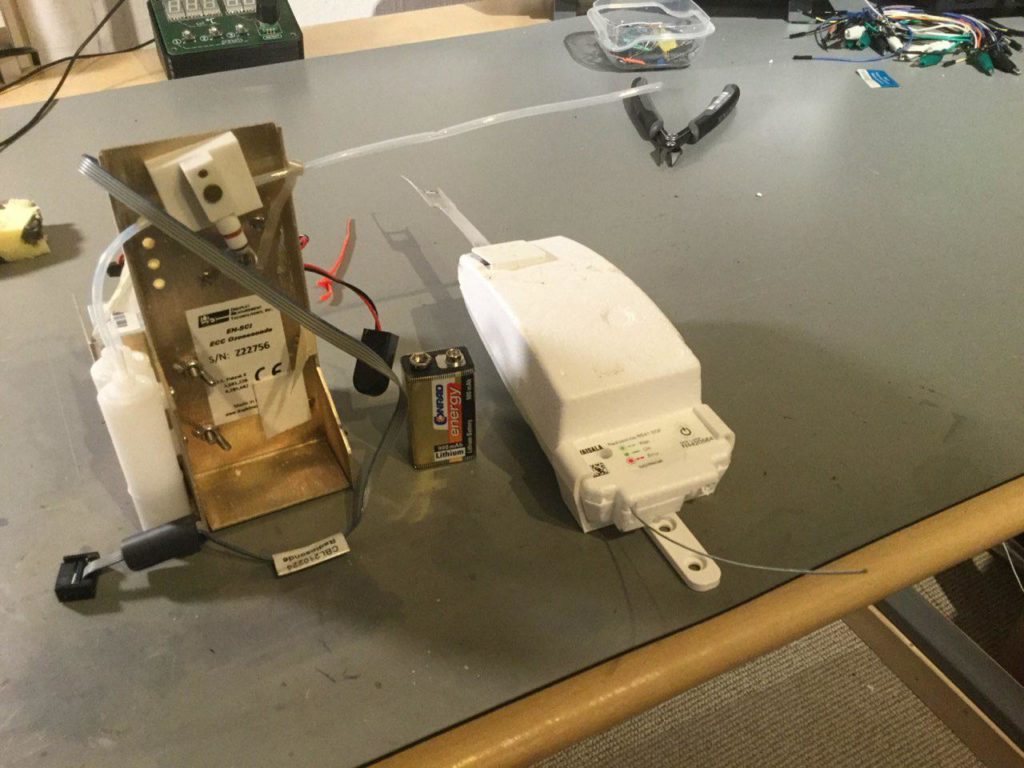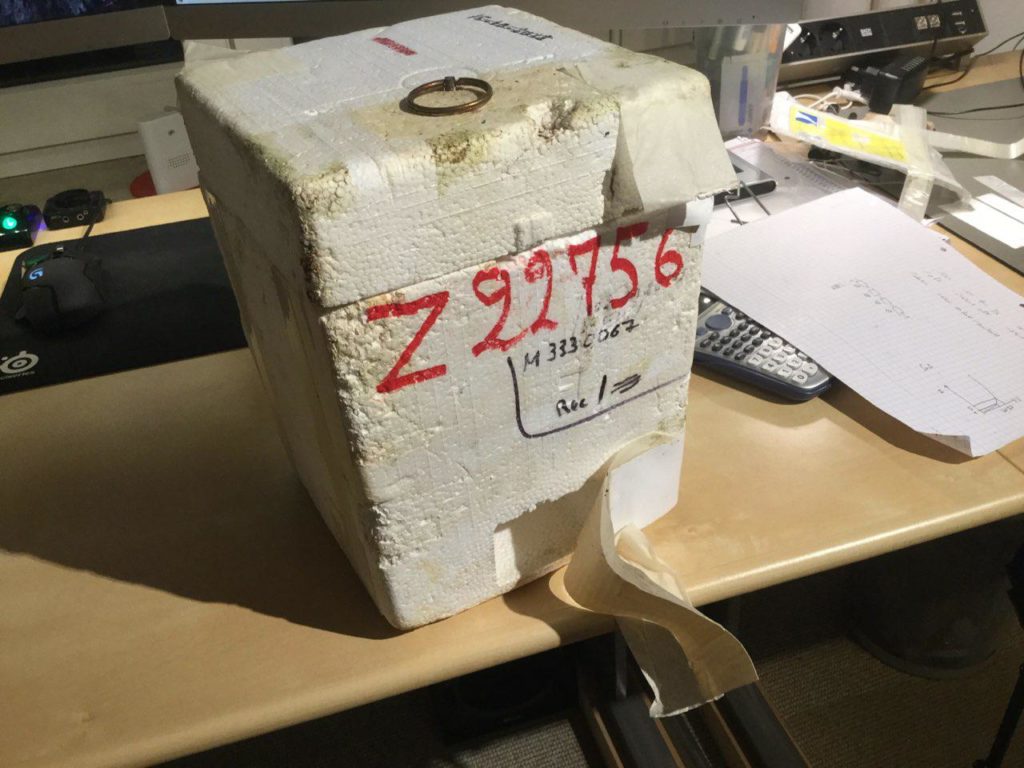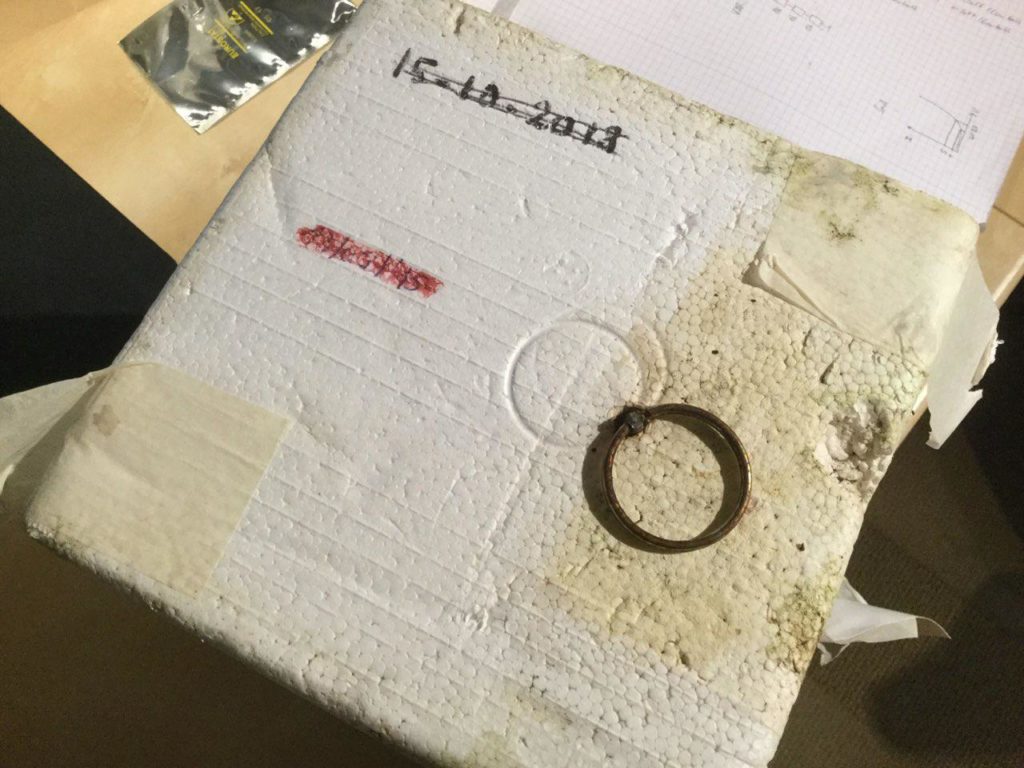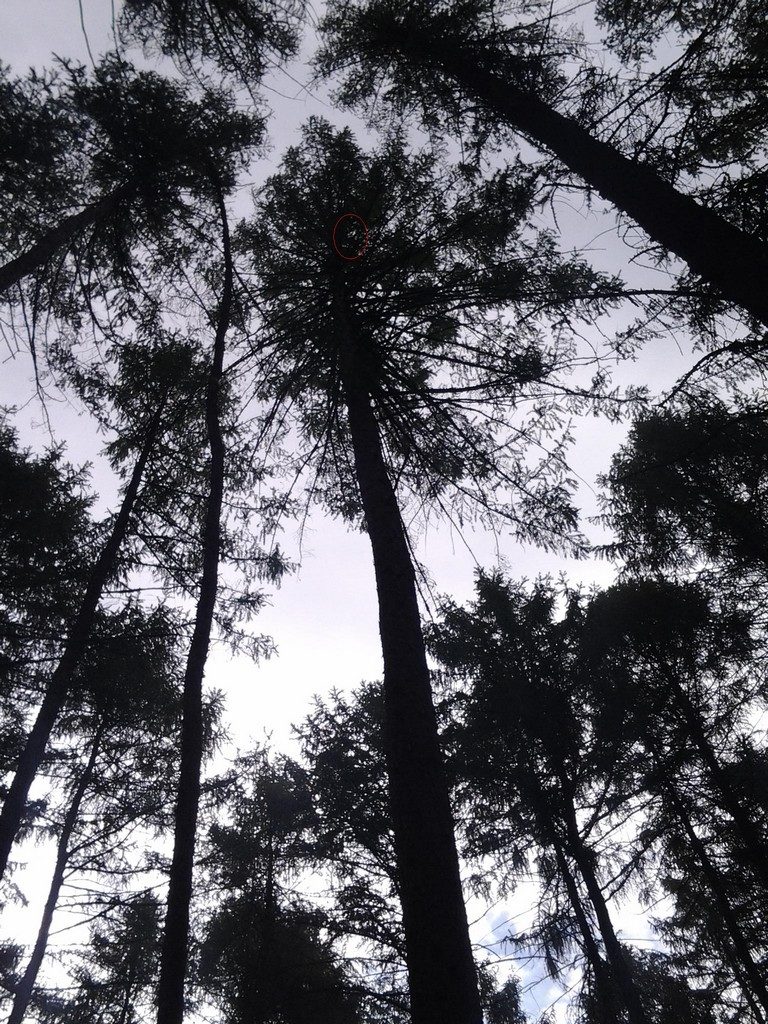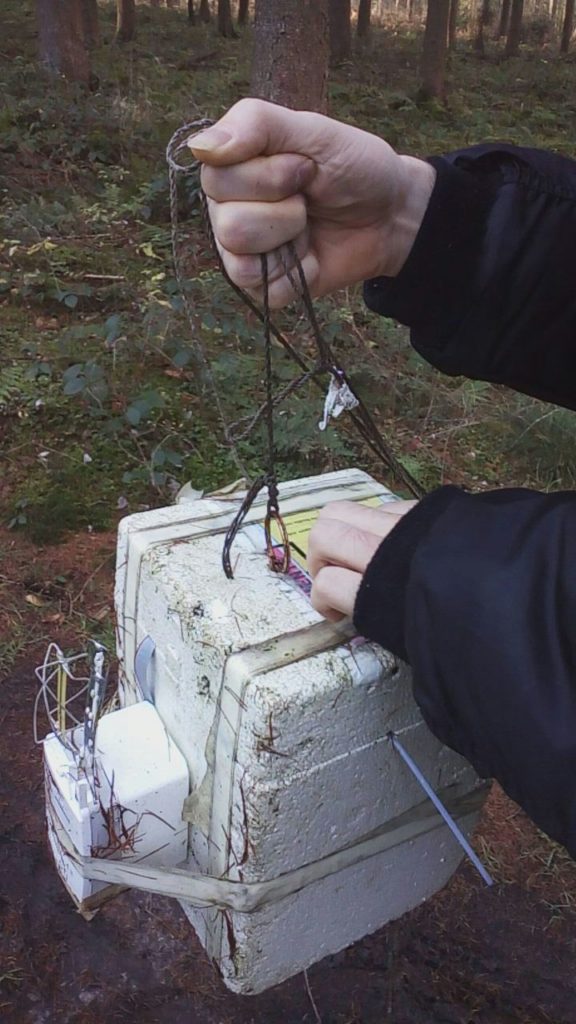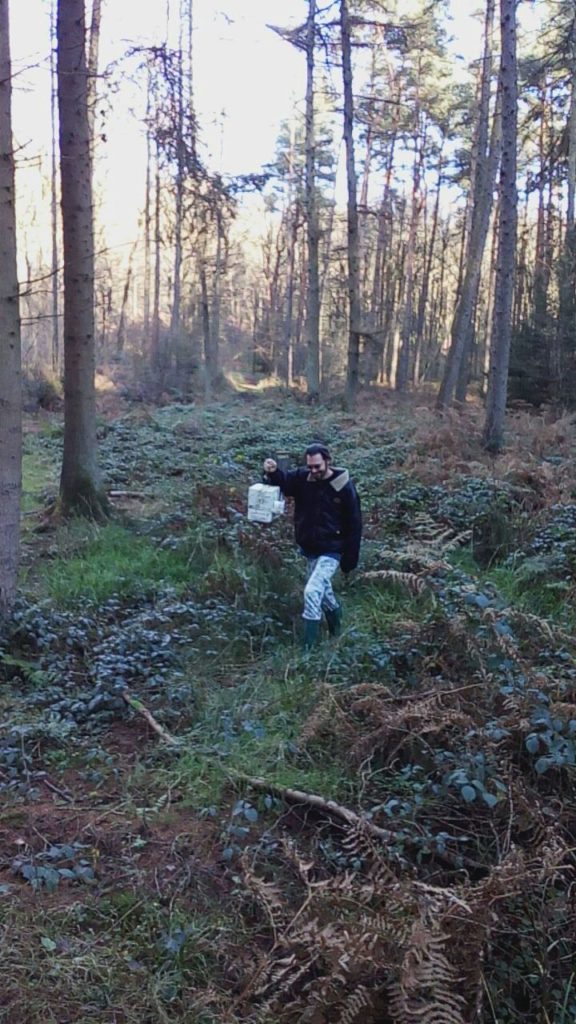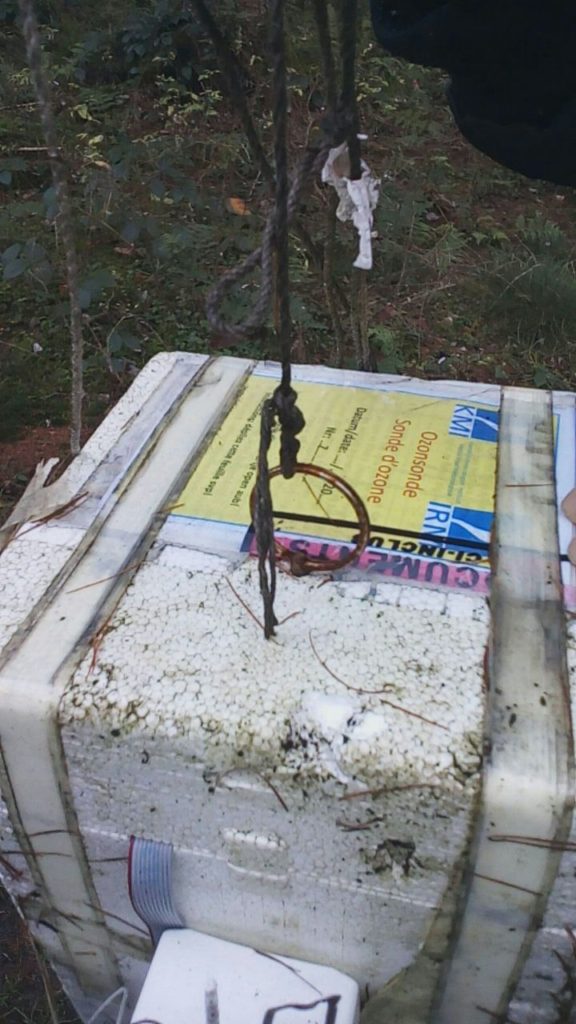#8 Uccle – Elkhausen
Vaisala RS41-SGP + Ozone / N4420564 / 17.12.2018 1200Z
This morning it was foreseeable that Uccle could be something this morning, if not for me, then for Kevin DO1KMT in Troisdorf. But the sonde accelerated and rushed with 380 km/h towards my QTH. Unfortunately a little south. The burst just before the airport Cologne-Bonn fit, but the parachute worked quite well during the descent and the probe was far behind Morsbach near a village called Birken-Honigessen.
Somewhat far for us, especially because I had to give a tutorial at 16:30 (but with another tutor, so there were still possibilities here) and the Bremen prediction was still in the forest. After a short linear interpolation it looked more like a field landing and my cotutor didn’t mind to do without me and so Kai and me set off.
Google Maps led us to the landing place from the south (mountains and so on) so that I already had reception 6 km away from our destination, about 3.5 km air distance from the sonde, with a 433 MHz magnetic foot antenna inside the car. Nothing that can be decoded with the RS41 Tracker (I have to put my current toolchain with Zilog on the Macbook), but quite strong. That didn’t give me much hope. The reception disappeared, and with it came my hope back: maybe it was a line of sight to the landing place on a mountain facing the road?
Until 400 m to the prediction there was not enough signal to decode, so that only then I had the certainty that the sonde was in the forest. (As it turned out in the aftermath, not 5 m from the prediction) But at least in a not so dense leafy forest, somewhere between undergrowth and real forest. So the car was parked on the nearby farm where we were greeted by three pony-sized dogs and explained our presence. From there over the fields into the bush; the parachute hung in approx. 7-8 meters height at a branch, the probe approx. 3 m under it. Shaking the tree caused the probe to sink by at least a few decimetres.
Since the branches on which the parachute was hanging and kept the probe from sinking were relatively thin, the plan was forged to push the probe down with one of the thick and long branches lying around. Unfortunately, most of them were already so rotten that they broke when they were lifted. In some distance I was lucky and found a long branch, which had to be bent over in a more recent storm, held only with a piece of bark on the stem and was about 6 m long. We carried it with combined forces to the sonde and at the upper site of the branch was arranged in such a way that a Y-fork was formed, which could be put around the cord on which the sonde hung, in order to then pull it down. The plan worked and when the probe was down even the parachute could be pulled down undamaged by pulling the cord. The Totex parachutes are massive; the big red ones made of plastic by BW and KNMI would certainly have been broken. The only loss is the temperature sensor, which is more the rule than the exception for tree-landers, especially if you have to use force.
Back at the TH, were I still was present in the las ten minutes of my tutorial (yikes) everything was examined: The sonde was in the air before, the ozone sensor comes from Droplet Measurement Technologies and has the serial number Z22756. At the top two dates are crossed out: 15.10.2018 and 13.05.15.
The probe looks as if it has been outside longer. The ring at the top is rusty and it has an interesting smell of its own. The water battery was present this time, not as with De Bilt where I was disappointed when unpacking, and this time also a heating battery is present. It’s a 9V lithium block brand Conrad Energy – didn’t even know that Conrad is also common in Belgium.
The sonde itself is a RS41-SGP, and (not to my surprise, DO1KMT had snatched one from the same batch in Wuppertal a few weeks ago, so we got to know each other) an N-serial number sonde in an EPS case. Since Uccle uses the plastic holder for dowelling and not only glues the sonde on like De Bilt, and the holder has the date code 5/14 at the back, we can now also say that the EPS probes don’t need any other holder.
The OIF board has the serial number M3330067.
Interesting to see the small differences between Uccle and De Bilt, and two ozone probes in 10 days are of course also great. Unfortunately both recycling probes. I think if I catch new probes, I’ll replace the styrofoam and send the old one back…
EDIT: As it turns out, Happysat already catched the sonde in 2015 when it landed in a forest near the Dutch/German border and sat on a tree for a few month. He returned it in september of 2018 and probably after another flight in October, which ended in a residential area in belgium, this was the third use of the sonde. Photos from Happysat are attached.
 Sondehunt
Sondehunt